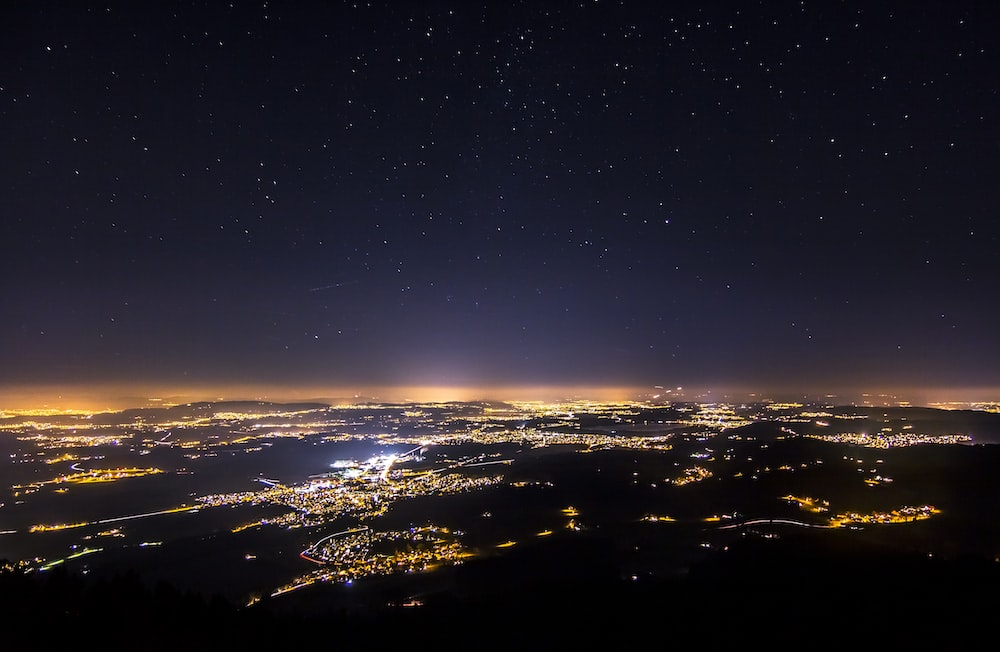Light pollution
Light
pollution
In the past time, we used to look up at the stars and feel a
sense of wonder. Now, we can barely see the stars due to heavy light pollution.
Modern streetlights are one of the main culprits of the night sky. These lights
are so bright that they can wash out the entire night sky, making it difficult
to see the stars. With more and more artificial light sources popping up, our night
skies are becoming brighter. And light pollution can have some serious
consequences.
The days are long gone when the night sky used to be full of
stars and everyone used to enjoy those glittery skies, if we talk about the 21st
century, 95% of the population can’t see the milk way from their residence.
According to some data, the child who was born 18 years ago was able to see
250+ stars and now only 100 stars would be barely visible from our residence.
This reduction in the number of stars shows how worst the light pollution has
become these years.
Introduction-
Light pollution is a rapidly increasing problem in modern
society, and it largely impacts the world. From destroying natural ecosystems
to affecting human health and well-being. In this blog, we will explore what
light pollution is, what are its causes and effects, as well as some solutions
to help reduce its impact.
What is Light Pollution?
Light pollution can be defined as artificial light that
affects the natural environment and human activities. Light pollution can be
caused by various sources, including streetlights, neon signs, building lights,
and other sources of artificial light.
Light pollution can be divided into four different types, Sky
glow, glare, light trespass, and clutter.
Sky glow- This is the brightening of the night sky over
populated areas, which can make it difficult to see stars and other celestial
objects.
Glare- It is the excessive brightness that can cause
discomfort and reduce visibility.
Light trespass- This occurs when light spills over property
lines, causing unwanted illumination.
Clutter- It refers to the excessive and confusing display of
lights that can distract and confuse people.
Causes of Light Pollution
Light pollution is caused by different factors, including
the increase in artificial lighting in urban areas, the use of bright and
inefficient lighting, and the lack of awareness and regulation surrounding
light pollution. The use of outdoor lighting for security, safety, and
aesthetic purposes has led to the proliferation of lighting fixtures in urban
and suburban areas. Additionally, the widespread use of low-cost and
low-quality lighting fixtures, such as incandescent bulbs and fluorescent
lights, has also contributed to the problem.
The Effects of Light Pollution
Light pollution can have negative effects on natural
environments, wildlife, and human activities. For example, excessive artificial
light can interfere with the migratory patterns of birds, causing them to
become off-track and confused. It can also confuse the mating and feeding
behaviors of nocturnal animals, leading to declines in their populations.
Additionally, light pollution can impact human health by disrupting our sleep
patterns, leading to fatigue, insomnia, and other health problems.
Furthermore, light pollution can also affect our ability to
enjoy the night sky. With the increasing brightness of the night sky, it has
become difficult to observe stars and other celestial objects. This can impact
the ability of astronomers to conduct research and hinder our understanding of
the universe.
Solutions to Light Pollution
There are several solutions to light pollution that
individuals, businesses, and governments can implement to reduce its impact. First
is to use energy-efficient lighting technologies, such as LED lights, which are
brighter and longer-lasting than traditional lighting fixtures. Additionally,
individuals and businesses can use motion sensors and timers to turn off lights
when they are not needed, reducing energy consumption and minimizing light
pollution.
Another solution is to use lighting fixtures that are
designed to minimize light pollution, such as shielded lights that direct light
downwards instead of upwards. Additionally, communities can implement zoning
ordinances that regulate the use of outdoor lighting, preventing light trespass
and minimizing glare.
Furthermore, education and awareness campaigns can help people
and communities to understand the impact of light pollution and take action to
reduce its impact. By educating people and spreading awareness about the
importance of preserving the night sky and protecting wildlife habitats, we can
create a culture that values dark skies and works to reduce light pollution.
Conclusion
In conclusion, light pollution is a growing problem that has
far-reaching consequences for natural environments, wildlife, and human health.
By understanding the causes and effects of light pollution and implementing
solutions to reduce its impact, we can create a more sustainable and healthy
future. Whether through the use of energy-efficient lighting technologies,
zoning ordinances, or education and awareness campaigns, we all have a role to
play in reducing light pollution and preserving the beauty of the night sky.



Comments
Post a Comment